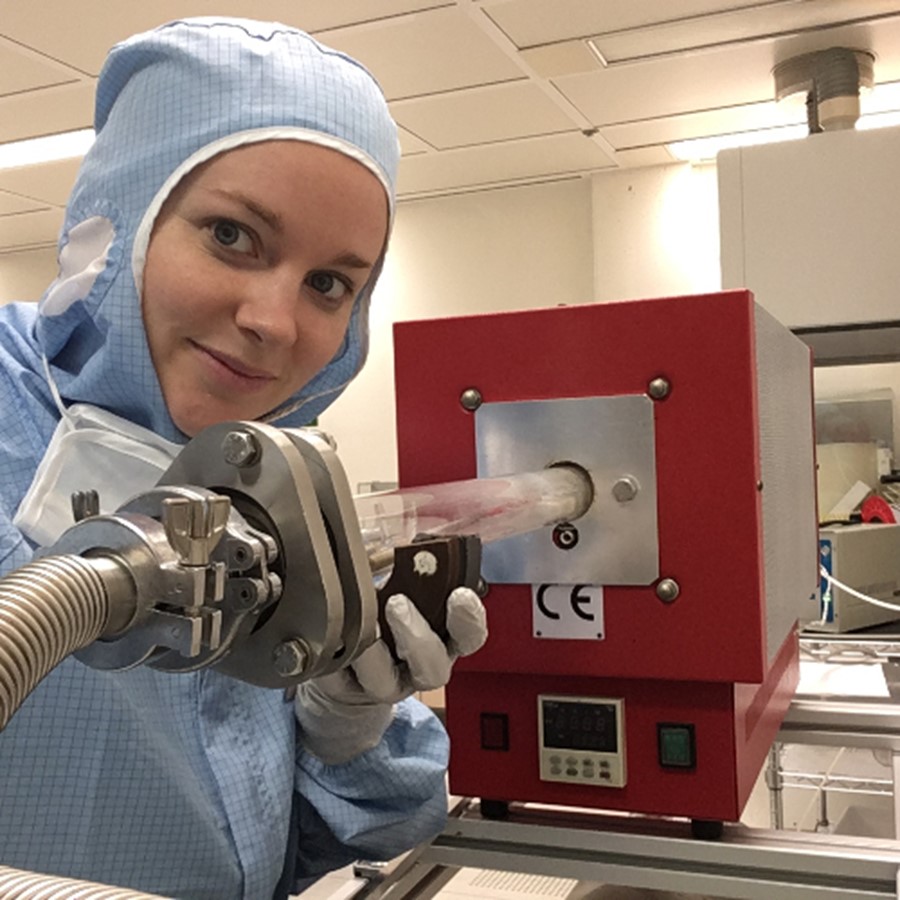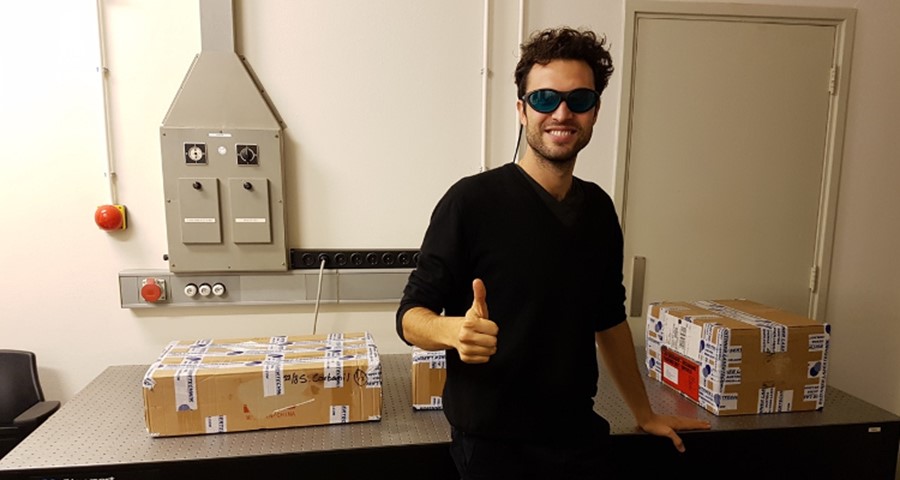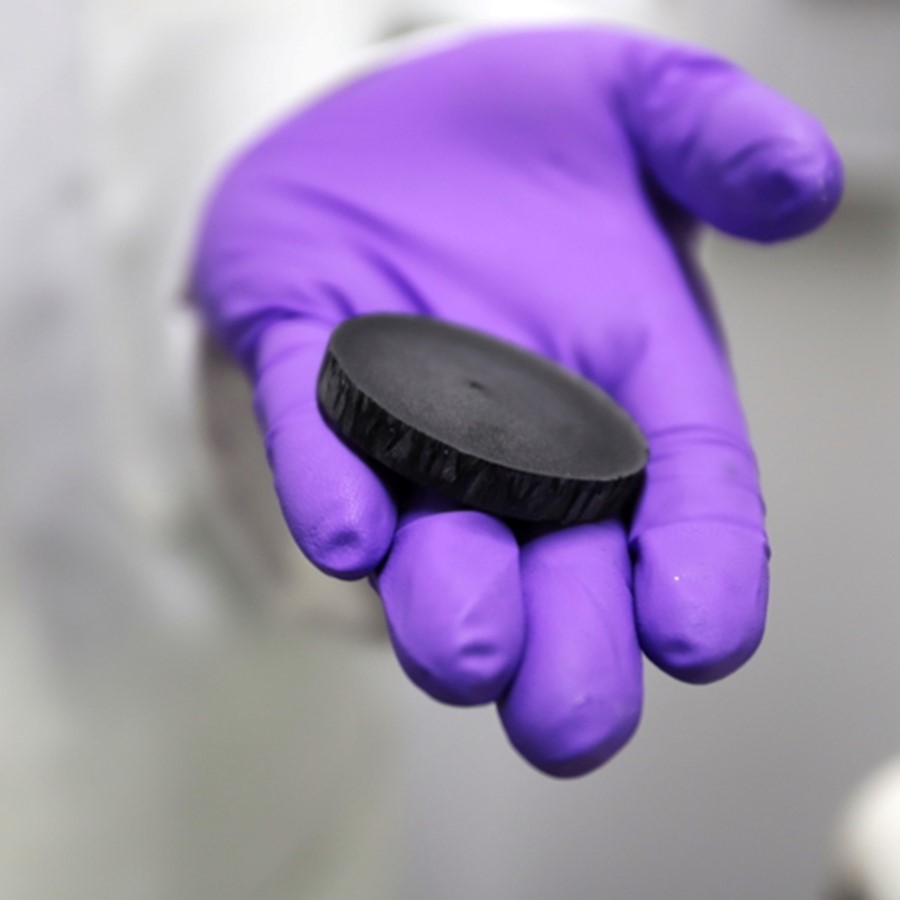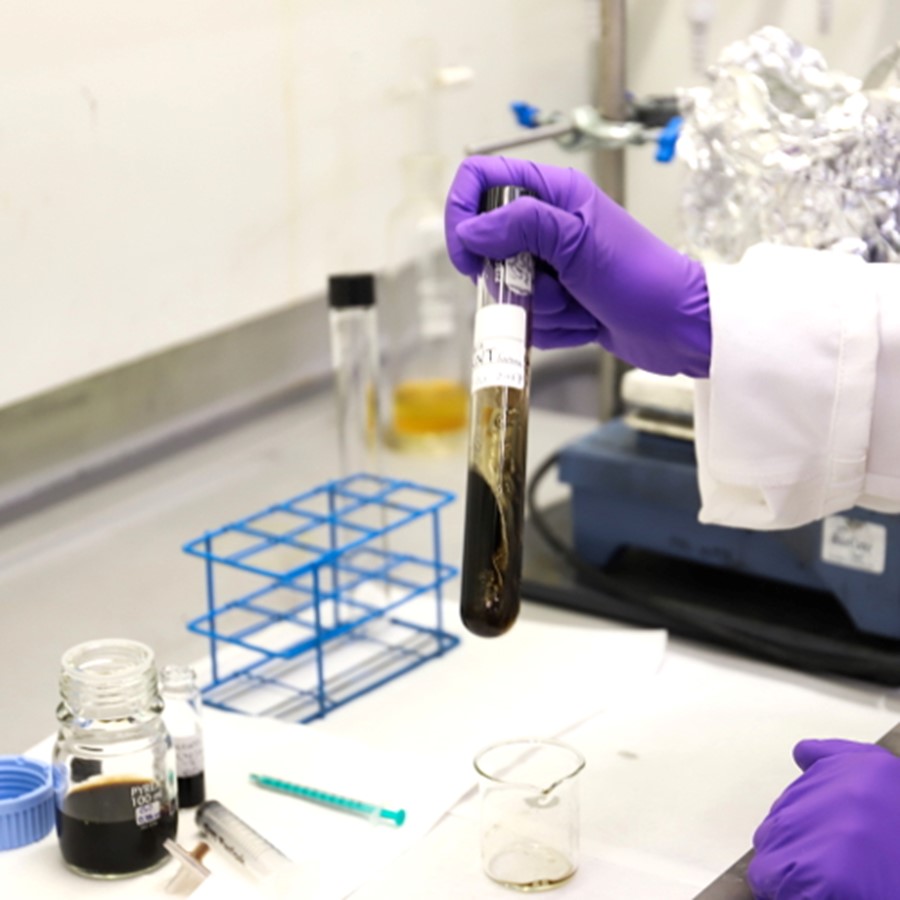3…2…1…Launch! Graphene goes Zero G!
After a long summer of hard work in the laboratories, researchers in the Graphene Flagship are ready for two experiments this week, testing graphene technologies for space-related applications in collaboration with the European Space Agency (ESA).
Getting to see these materials that we’ve been working on for so long, finally work in the conditions that we want them to is really exciting"
After a long summer of hard work in the laboratories, researchers in the Graphene Flagship are ready for two experiments this week, testing graphene technologies for space-related applications in collaboration with the European Space Agency (ESA).
Two teams of researchers will explore the benefits of graphene as a light-propulsion material in solar sails, and as a smart coating in loop heat pipes for satellites. Both experiments will be performed in microgravity conditions, to simulate the extreme conditions in space. The solar sails will float in microgravity in a drop tower experiment, while the research team investigating heat pipes will experience weightlessness onboard a parabolic flight.
The Graphene Flagship is a pan-European research consortium committed to bringing graphene technologies through research laboratories to mature applications. Graphene, the single-atom thick carbon sheet, is promising for a range of applications thanks to its excellent electrical, mechanical and thermal properties. These properties will now be tested in extreme microgravity conditions, expanding graphene’s potential into new areas.
Loop heat pipes are cooling systems used extensively in satellites and aerospace applications. Cooling is achieved by converting a working liquid into gas inside a wick, drawing energy from the hot instrument to be cooled. Following promising results on the ground, a team of researchers from the Graphene Flagship aim to demonstrate that coating the wicks with graphene can improve the effectiveness of the heat pipe even in microgravity conditions.

Dr Meganne Christian, CNR
To test the graphene-coated wicks in microgravity conditions, the researchers will take part in a low-gravity parabolic flight operated by ESA in partnership with Novespace. By performing a series of parabolic manoeuvres, microgravity is simulated in the flight, and the researchers will experience weightlessness.
“I’m really excited, I’ve never done anything like this before,” said Dr Meganne Christian, a researcher at CNR. “Getting to see these materials that we’ve been working on for so long, finally work in the conditions that we want them to is really exciting.”
"I am excited about the experiment and looking forward to experiencing low gravity,” said Dr Yarjan Samad, a researcher at the University of Cambridge. “Performing the experiments in microgravity will be a challenge, but we have all done a lot of work and I think we will get great results in improving the performance."
The experiment is a collaboration between Graphene Flagship partners at the Microgravity Research Centre, Université libre de Bruxelles, Belgium; the Cambridge Graphene Centre, University of Cambridge, UK; Institute for Organic Synthesis and Photoreactivity and Institute for Microelectronics and Microsystems, National Research Council of Italy (CNR), Italy; and Leonardo Spa, Italy, a global leader in aerospace, operating in space systems and high-tech instrument manufacturing and in the management of launch and in-orbit services and satellite services.
Light sails can propel objects in space using pressure from light shining on a reflective surface. GrapheneX, a team of PhD students from Delft Technical University (TU Delft), Netherlands, have developed an experiment to test graphene’s potential for use in light propulsion, by shining laser light onto free-floating graphene membranes in microgravity. The TU Delft Space Institute, Netherlands, is also providing support to the GrapheneX project.
“If you want to make a solar sail it’s very important that the materials you make the sail out of is very light,” said Vera Janssen (TU Delft), a PhD student involved in the GrapheneX project. “The ultimate lightness and the strength are really the main advantages of using graphene.”
The experiment will be performed at the ZARM Drop Tower in Bremen, Germany as part of ESA Education’s Drop Your Thesis! programme, which invites students to propose ideas for microgravity experiments. To create extreme microgravity conditions, down to one millionth of the Earth’s gravitational force, a capsule containing the experiment is catapulted up and down the 146 metre tower, leading to 9.3 seconds of weightlessness.
“Facilities like the ZARM Drop Tower are something impressive, in the scale they are and the number of things that have to work together to be able to function properly. I’m very honoured to go there,” said Rocco Gaudenzi (TU Delft), another PhD student who is part of the GrapheneX team.
These two ambitious experiments are an excellent demonstration of graphene’s diverse potential, and will lay the groundwork to expand the frontiers of graphene research.
Prof. Jari Kinaret (Chalmers University of Technology, Sweden), Director of the Graphene Flagship, said “These two projects exemplify the two-fold character of the Graphene Flagship: the loop heat pipe project is targeting a specific application, while the light sail project is firmly linked to basic research and builds upon the unique combination of properties that only graphene can offer. I am particularly proud of the fact that one of these projects was initiated by students working on area completely disconnected from space applications: this demonstrates the creativity of the next generation of researchers, and shows the sometimes-surprising links between different parts of our Flagship - or maybe I should say spaceship?”
Prof. Andrea Ferrari (University of Cambridge), Science and Technology Officer of the Graphene Flagship and Chair of its Management Panel added "These are the first experiments where graphene is tested in near zero gravity conditions for space applications, and the first collaboration between the Graphene Flagship and the European Space Agency, with a clear path to applications, thanks to the Flagship Partner Leonardo, a world leading aerospace industry. We have already a roadmap to take graphene further in the space industry across the next two to four years, with an additional two zero gravity campaigns already confirmed."

Rocco Gaudenzi, TU Delft

Additional Information
More detailed explanations of each experiment and blogs from the researchers can be found here:
Satellite heat pipes
Solar sails
High resolution images can be found in the Graphene Flagship image library at:
https://www.flickr.com/photos/151519747@N06/albums/72157688233889331
Graphene
Graphene is one of the most interesting and versatile materials known to date. The world's first two-dimensional material, this single layer of carbon atoms arranged in a hexagonal lattice has a set of unique and outstanding properties. As well as being the thinnest, strongest and lightest material, graphene is flexible, impermeable to molecules and extremely electrically and thermally conductive. As the world strives to maintain its pace of innovation, graphene has much to offer.
Graphene is helping to facilitate the next generation of technology. For example, the strong and flexible nature of graphene makes flexible displays and bendable batteries possible. Its excellent sensing ability can be used in the next generation of wearable electronics and to develop building blocks for the internet of things. Graphene’s unique combination of properties coupled with its ease of incorporation into composite materials mean that it can enhance the composite world. Graphene is also paving the way for novel diagnosis and treatments such as in the realm of drug delivery and biosensors. Graphene-based technologies are proving integral to the new generation of communications, such as 5G, enabling high performance optical communication systems through ultra-fast and compact optoelectronic devices.

About the Graphene Flagship
The Graphene Flagship was launched by the European Union in 2013 as part of its largest research initiative ever. With a budget of €1 billion it represents a new form of joint, coordinated research initiative on an unprecedented scale. The overall goal of the Graphene Flagship is to take graphene from the realm of academic laboratories into European society, facilitating economic growth and creating new jobs, in the space of ten years. Through a combined academic-industrial consortium consisting of more than 150 partners in over 20 European countries, the research effort covers the entire value chain, from materials production to components and system integration, and targets a number of specific goals that exploit the unique properties of graphene.
About the European Space Agency Education Programme
The European Space Agency (ESA) Education Programme has the objective to inspire and motivate young people to enhance their literacy and competence in science, technology, engineering and mathematics (STEM disciplines), and to pursue a career in these fields, in the space domain in particular. To this end, it offers a number of exciting activities that range from training and classroom activities that use space as a teaching and learning context for school teachers and pupils, to real space projects for university students.
About the European Space Agency
The European Space Agency (ESA) is Europe’s gateway to space. Its mission is to shape the development of Europe’s space capability and ensure that investment in space continues to deliver benefits to the citizens of Europe and the world.
ESA is one of the few space agencies in the world to combine responsibility in nearly all areas of space activity: from Earth observation, space science, human spaceflight, exploration and launchers to navigation, telecommunications, technology and operations.
ESA is an international organisation with 22 Member States. By coordinating the financial and intellectual resources of its members, it can undertake programmes and activities far beyond the scope of any single European country.
About the Center of Applied Space Technology and Microgravity (ZARM)
The Center of Applied Space Technology and Microgravity (ZARM) is a research institute of the University of Bremen focused on the investigation of gravity-dependent phenomena and space-related research. With a height of 146 meters the Bremen Drop Tower is the main laboratory of ZARM and the only laboratory of this kind in Europe. It offers the opportunity for short-term experiments in weightlessness and has acquired international renown during the last 25 years for offering microgravity conditions of the highest quality. Owing to the catapult system, a construction developed by ZARM engineers, the experiment duration has been extended to 9.3 seconds - unmatched by any other drop facility worldwide.
Due to its excellent microgravity conditions scientists from all over the world visit the Bremen Drop Tower in order to experiment in different fields of fundamental research like astrophysics, biology, chemistry, combustion, fluid dynamics, fundamental physics, and materials sciences or to conduct technology tests preparing and qualifying hardware for future space missions.
www.zarm.uni-bremen.de
About Novespace
A subsidiary of CNES (French Spatial Study National Center), Novespace was established in 1986 for the purpose of promoting micro-weightlessness as a tool for scientific experimentation. After more than 130 parabolic flight campaigns carried out from 1988 to 1996 on board the Caravelle Zero G, Novespace took the Airbus A300 ZERO-G into service in 1997, replaced by an Airbus A310 in 2014, owned by Novespace.
Based at the Bordeaux-Mérignac airport zone, Novespace organizes an average of six parabolic flight campaigns annually, principally for the account of space agencies (CNES, ESA, DLR, JAXA, etc.) within the framework of their scientific and technological research programmes. The company also used the A300 ZERO-G for missions for observing atmospheric re-entry of the Cryotechnic Main Stage (CMS) of the Ariane 5 rocket.
Novespace has carried out more than 130 parabolic flight campaigns on board the A300 ZERO-G and its successor the A310 ZERO-G and more than 13000 parabolas. This is equivalent to 80 hours of accumulated weightlessness.



